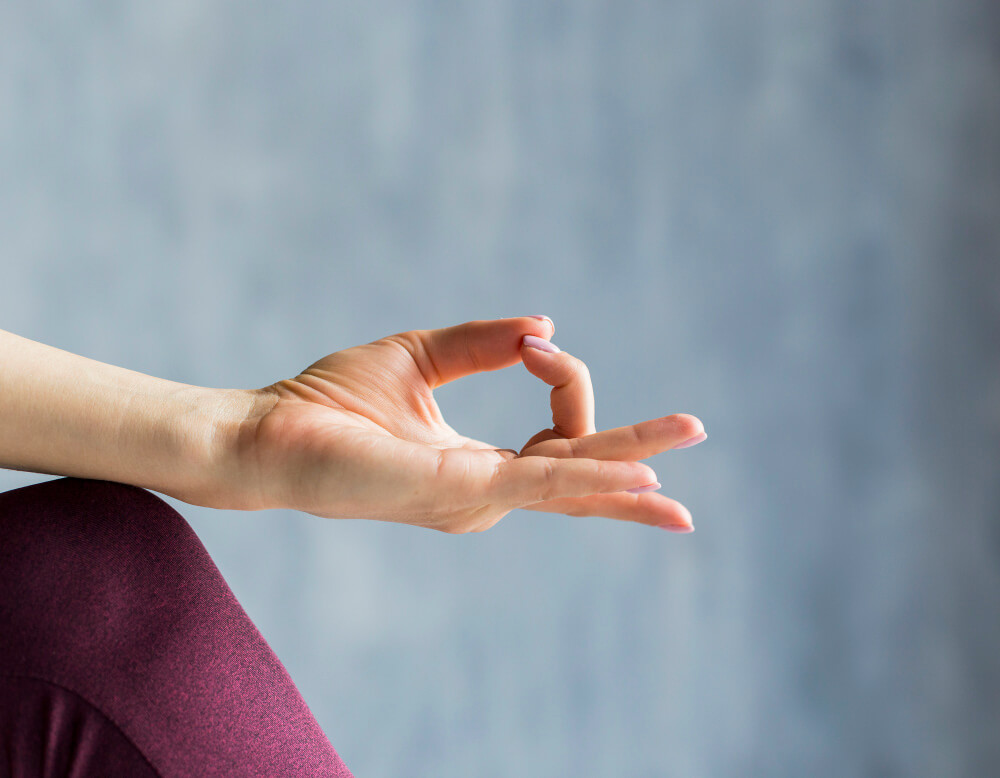
Discover Ashwini Mudra, a yoga practice rooted in ancient wisdom. Unveil its origins, techniques, benefits, and precautions for a holistic understanding of this transformative gesture.
Key Takeaway:
- Ashwini Mudra, inspired by horse gestures, boosts agility and strength.
- Offers therapeutic benefits for reproductive and bladder issues.
- Enhances spiritual growth by awakening Kundalini energy.
- Requires precautions for specific health conditions.
- Practice regularly for physical vitality and spiritual awakening.
Ashwini Mudra is related to yoga. Yoga is beneficial for our health no matter what happens.
For years, sage monks have been using many types of yoga asanas, meditation, pranayama, postures, and asanas to keep themselves healthy and recommend us to do so that we can keep ourselves healthy like them.
Yoga is beneficial for our health in every situation. In simple language, Ashwini mudra means horse, to perform actions like a horse.
The way a horse keeps opening and closing its anus, that is, the way it shrinks and leaves loose, its action is called Ashwini Mudra. This is why a horse is stronger than other animals.
The way the horse repeatedly squeezes and loosens its anus, the action of shrinking and spreading the anus is called Ashwini mudra.
In the following article, we will learn about Ashwini Mudra i.e. how to do this yoga and the benefits from it. Details of this mudra are also found in our texts.
What is Ashwini Mudra?
Ashwini Mudra, also known as the “Horse Gesture,” is a powerful yogic technique focusing on controlled contraction and relaxation of the anal sphincter muscles. The name “Ashwini” derives from the Sanskrit word for horse, as the practice mimics the natural movement horses make with their anal sphincter after defecation.
If you’re struggling with pelvic floor weakness, digestive issues, or seeking to enhance your overall energy levels, Ashwini Mudra offers a natural, accessible solution that has been practiced for centuries in traditional yoga. This ancient practice not only strengthens your body physically but also promotes energetic balance and spiritual awakening.
In this comprehensive guide, you’ll learn exactly how to perform Ashwini Mudra correctly, understand its profound benefits for specific health conditions, and discover how to incorporate this practice safely into your daily routine for maximum effectiveness.
History of Ashwini Mudra
Initially, the Ashwini mudra was not a normal posture, but a hatha yoga action. Which was used to awaken the Kundalini, make semen upward, spiritual energy, work-energy, and store it
But slowly, in addition to its spiritual benefits, many benefits related to physical life also emerged. Due to its simplicity, countless advantages, and the global expansion of yoga, Ashwini mudra spread. And today this mudra has taken a very popular form in the world of yoga.
Common Health Issues Addressed by Ashwini Mudra
Ashwini Mudra specifically targets and helps alleviate several common health concerns:
- Constipation and digestive disorders: By improving blood circulation to the digestive organs
- Pelvic floor weakness: Particularly beneficial for women post-childbirth or those experiencing urinary incontinence. Learn more from Mayo Clinic
- Hemorrhoids and anal fissures: Through strengthening of the anal sphincter muscles
- Sexual health issues: Including erectile dysfunction and premature ejaculation in men
- Lower back pain: By strengthening the muscles supporting the lumbar spine
- Energy depletion and fatigue: Through activation of root chakra energy
Step-by-Step Guide to Performing Ashwini Mudra
Basic Technique
- Starting position: Sit in a comfortable meditation posture with your spine straight. Sukhasana (Easy Pose), Siddhasana (Perfect Pose), or Padmasana (Lotus Pose) are all suitable options.
- Relaxation preparation: Close your eyes and take 5-10 deep breaths to relax your body and mind. Focus particularly on relaxing your pelvic region.
- Contraction phase: Inhale naturally, then as you exhale, gently contract your anal sphincter muscles (the muscles you would use to stop the flow of urine or prevent passing gas).
- Hold: Maintain the contraction for 1-5 seconds initially, gradually increasing to 10-15 seconds as you progress.
- Release: Consciously relax the muscles completely.
- Repetition: Beginners should start with 10-15 repetitions, gradually increasing to 25-30 repetitions over time.
Advanced Practice Tips
- Breath coordination: For enhanced benefits, coordinate the contraction with breath retention (kumbhaka). Inhale deeply, hold your breath, then contract the anal muscles while maintaining the breath hold.
- Intensity variation: Practice with different levels of contraction—gentle, moderate, and strong—to develop better muscle control.
- Integration with asanas: Once comfortable with the basic technique, you can practice Ashwini Mudra during yoga poses like Malasana (Garland Pose) or Uttanasana (Standing Forward Bend) for amplified effects.
Modifications for Beginners
If sitting postures are uncomfortable, you can practice Ashwini Mudra:
- While lying on your back with knees bent (similar to preparation for bridge pose)
- In a standing position with feet hip-width apart
- While walking (a dynamic version that can be practiced discreetly anywhere)
Benefits of Ashwini Mudra for Physical Health
Pelvic Floor Strengthening
Ashwini Mudra directly strengthens the pubococcygeus (PC) muscle and the entire pelvic floor muscle group. A strong pelvic floor:
- Provides better support for pelvic organs
- Prevents urinary incontinence
- Improves core stability and posture
- Enhances balance and movement efficiency
Scientific research shows that targeted pelvic floor exercises like Ashwini Mudra can improve strength by up to 70% when practiced consistently over 12 weeks.
Digestive System Enhancement
Regular practice of Ashwini Mudra stimulates the enteric nervous system (sometimes called the “second brain”) that controls digestive function. This results in:
- Improved peristalsis (the wave-like muscle contractions that move food through the digestive tract)
- Enhanced nutrient absorption
- Reduced bloating and gas
- Relief from constipation through improved bowel function
Circulation Improvement
The rhythmic contraction and relaxation of Ashwini Mudra creates a “pumping effect” that:
- Increases blood flow to the pelvic region
- Reduces congestion in hemorrhoidal veins
- Delivers more oxygen and nutrients to reproductive organs
- Facilitates removal of metabolic waste from pelvic tissues
Therapeutic Benefits of Ashwini Mudra
Ashwini Mudra for Postpartum Recovery
For women recovering from childbirth, Ashwini Mudra offers specific benefits:
- Accelerates healing of the perineum
- Helps restore vaginal tone and strength
- Reduces risk of uterine prolapse
- Supports bladder control recovery
Recommended practice: Begin with gentle contractions 4-6 weeks postpartum (after receiving clearance from your healthcare provider). Start with 5-10 repetitions twice daily, gradually increasing intensity and duration.
Ashwini Mudra for Constipation Relief
Chronic constipation sufferers often experience significant improvement through regular practice as it:
- Stimulates parasympathetic nervous system activity that governs digestion
- Strengthens abdominal muscles involved in elimination
- Improves rectal muscle tone for more efficient bowel movements
- Increases blood flow to digestive organs
For maximum constipation relief, combine Ashwini Mudra with proper hydration, a high-fiber diet, and gentle twisting yoga poses.
Ashwini Mudra for Sexual Health
This practice offers remarkable benefits for sexual wellness:
- For men: Improved ejaculatory control, stronger erections, and enhanced prostate health
- For women: Increased vaginal sensitivity, stronger orgasms, and better lubrication
- For all genders: Heightened awareness of sexual energy and greater control over its expression
These benefits stem from the practice’s ability to increase awareness of subtle muscle movements while improving blood flow to reproductive organs.
Spiritual Benefits of Ashwini Mudra
Energy Awakening and Chakra Activation
In yogic philosophy, Ashwini Mudra is considered a powerful technique for:
- Awakening Kundalini energy (the dormant spiritual energy at the base of the spine)
- Activating Muladhara (Root) Chakra, which governs basic survival needs and stability
- Directing prana (life force energy) upward through the subtle energy channels
- Purifying the nadis (energy pathways) for more efficient energy flow
Meditative Enhancement
When incorporated into meditation practice, Ashwini Mudra:
- Helps ground wandering thoughts by creating body awareness
- Redirects sexual energy toward spiritual awakening (similar to brahmacharya practices)
- Improves concentration through the focus required to perform the technique
- Creates a subtle internal lock (bandha) that helps contain and direct subtle energy
Traditional texts suggest practicing Ashwini Mudra before meditation to prepare the energy body and enhance the depth of meditative states.
Precautions and Contraindications
While generally safe for most people, Ashwini Mudra should be approached with caution in certain conditions:
When to Avoid Completely
- During recent rectal or prostate surgery recovery
- With active anal fissures, tears, or severe hemorrhoids
- During acute inflammatory bowel disease flares
- In cases of rectal prolapse
When to Practice with Modification and Professional Guidance
- During pregnancy (especially third trimester)
- With hypertension or cardiovascular conditions
- With chronic constipation accompanied by severe straining
- After recent abdominal surgery
Always consult with a healthcare professional before beginning Ashwini Mudra if you have any underlying health conditions, particularly those affecting the gastrointestinal, reproductive, or cardiovascular systems.
Precautions While Doing Ashwini Mudra.
The following precautions should be followed while doing Ashwini mudra.
- Patients with high blood should not do much of this mudra and should do it at the same speed.
- Pregnant women should perform this Mudra under the supervision of any form of life.
- Asthma patients should not do Ashwini mudra.
- While doing this Mudra you should drink the appropriate amount of water. A person should drink 5% of his weight in water throughout the day.
- This mudra should be done on an empty stomach.
When to do Ashwini Mudra and How Long.
You can do this Mudra at any time of the day. But keep in mind that whenever you do this mudra, you do it on an empty stomach and do this posture only by laying a seat or posture on the ground and do not do this posture more than strength, otherwise there may be loss in place of profit.
Initially, do this posture 20 times at a time and do not shrink the anus for more than 3 to 6 seconds. If you do it continuously or if it is used, you can do it 100 times.
Ashwini Mudra is the Yoga Mudra. Continually practicing it gives more energy and strength. It is believed that by continuously doing the Ashwani mudra, a person gets strength like a horse.
Final Words
Ashwini Mudra offers a powerful, accessible practice for improving pelvic health, digestive function, and overall vitality. By incorporating this simple yet profound technique into your daily routine, you can experience benefits spanning from the purely physical to the deeply spiritual.
Begin with modest expectations and a gentle approach, gradually building strength and awareness in this often-neglected region of the body. With consistent practice, you’ll likely notice improvements in your physical health, energy levels, and perhaps even discover deeper dimensions of your yogic journey.
Remember that Ashwini Mudra, like all yogic practices, works best as part of a holistic approach to wellbeing that includes proper nutrition, adequate hydration, and a balanced lifestyle. Honor your body’s signals, practice with mindfulness, and enjoy the journey of discovering this ancient technique’s benefits for yourself.
Disclaimer: While Ashwini Mudra is generally safe for most individuals, this article is for informational purposes only and not intended as medical advice. Please consult with a qualified healthcare professional before beginning any new health practice, particularly if you have existing health conditions.
Frequently Asked Questions About Ashwini Mudra
How often should I practice Ashwini Mudra for best results?
For general health maintenance, practicing 10-15 repetitions once or twice daily is beneficial. For specific therapeutic purposes (like pelvic floor rehabilitation or constipation relief), you may gradually increase to 25-30 repetitions 2-3 times daily. The key is consistency—daily practice yields much better results than occasional intense sessions.
How soon will I see results from practicing Ashwini Mudra?
Results timeline varies by individual and condition:
Digestive improvements: Often noticeable within 1-2 weeks of daily practice
Pelvic floor strength: Measurable improvement typically occurs after 4-6 weeks of consistent practice
Energy and spiritual effects: More subtle and variable, but practitioners often report increased energy and groundedness within 3-4 weeks
Can I practice Ashwini Mudra during menstruation?
Yes, unlike some yogic practices that are contraindicated during menstruation, Ashwini Mudra is generally safe to practice during your period. Some women find it helps relieve menstrual cramps through improved circulation to the pelvic region. However, listen to your body and reduce intensity if you experience any discomfort.
Is Ashwini Mudra the same as Kegel exercises?
While similar, they have key differences:
Kegel exercises primarily target the pubococcygeus muscle
Ashwini Mudra engages the entire pelvic floor complex including the anal sphincter
Ashwini Mudra incorporates breath control and energetic components not present in standard Kegel exercises
In yogic tradition, Ashwini Mudra has specific spiritual purposes beyond physical strengthening


